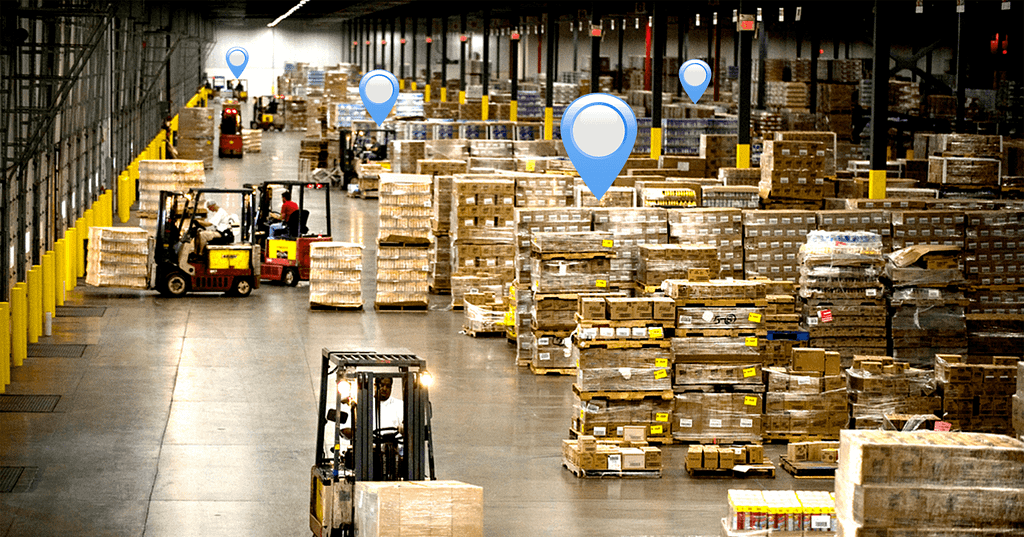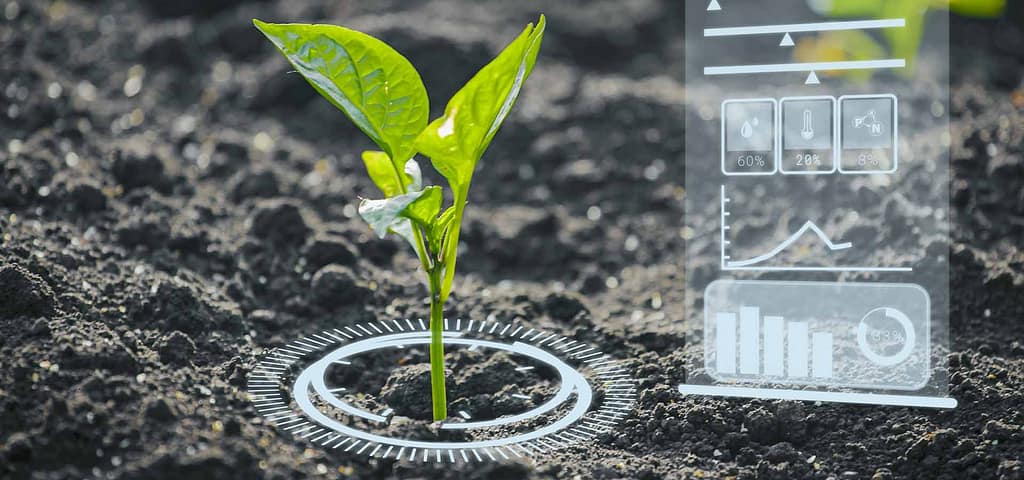Whether you’ve noticed or not, the Internet of Things (IoT) has seamlessly integrated itself into our daily lives. According to Exploding Topics, there are already more than 14 billion connected IoT devices around the world, and the trajectory points toward an even more interconnected future, with an anticipated 25.44 billion devices by the end of 2030.
From smart thermostats optimizing home temperatures to fitness trackers monitoring our health, IoT devices have become an integral part of the modern, interconnected world.
This pervasive integration extends beyond our personal spaces, reaching into the distant realms of industry and commerce as well. In these scenarios, IoT’s influence is particularly noteworthy: there are sensors monitoring manufacturing equipment, smart meters optimizing energy consumption, trackers that constantly stream their location, and so on.
But what exactly is IoT asset tracking, and how can it make your operations as a business faster, more efficient, and even more sustainable? This is what we’ll thoroughly talk about in this article – so take a seat, relax, and let’s get started!
What is IoT asset tracking after all?
IoT asset tracking is a sophisticated system that leverages the capabilities of the Internet of Things to monitor and manage the location, condition, and other pertinent data of physical assets in real time.
Its fundamental objective is to provide businesses with comprehensive visibility into the movements and status of their assets, thus enhancing operational efficiency and facilitating informed decision-making – more on benefits and use cases later in the article.
At its core, IoT asset tracking involves the deployment of connected devices, often equipped with sensors, GPS (Global Positioning System), RFID (Radio-Frequency Identification), or other tracking technologies, on various physical assets. They can range from machinery and equipment to vehicles, inventory, and whatever valuable resources you can picture.

These tracking devices generate a continuous stream of data, providing information about the asset’s location, environmental conditions, and usage patterns. This data is then transmitted through IoT networks to centralized systems for analysis and storage.
Then, specialists can derive powerful insights that empower businesses to optimize their asset management strategies, improve resource allocation, and mitigate potential risks associated with asset loss, theft, or misuse.
The real-time nature of IoT asset tracking is a significant advancement over traditional methods, offering businesses immediate access to accurate and up-to-date information about their assets. This enables proactive decision-making and enhances overall operational agility.
Furthermore, IoT asset-tracking solutions can be tailored to suit the unique needs of different industries and businesses. The versatility of these systems allows for monitoring assets across diverse environments, from manufacturing plants and warehouses to transportation fleets and construction sites.
This adaptability makes IoT asset tracking a valuable tool for businesses seeking to streamline their operations, reduce costs, and gain a competitive edge in their respective markets.
What are the core benefits and use cases of IoT asset tracking?
IoT asset tracking offers a variety of benefits that businesses can leverage to enhance efficiency, optimize resource utilization, and gain a competitive edge. Here are some of the best ones:
Real-time visibility
IoT asset tracking provides businesses with real-time visibility into the location and status of their assets.
For example, consider a logistics company managing a fleet of delivery trucks. With IoT asset tracking, the business can monitor the location of each vehicle in real time, which ensures efficient route planning and timely deliveries.
Additionally, if a customer requests an update on their shipment, the company can provide accurate and instant information, enhancing customer satisfaction.
Enhanced inventory management
Businesses can optimize inventory management by accurately tracking assets and stock levels.
In a retail setting, IoT asset tracking ensures that the inventory levels are continuously monitored. When a product reaches a predetermined reorder point, the system can automatically generate orders, which prevents stockouts.
In other words, this process can be automated, minimizing manual intervention and the likelihood of errors in inventory counts.

Operational efficiency goes up
The continuous and streamlined data flow from tracking devices improves overall operational efficiency.
For instance, picture a construction company utilizing heavy equipment. By monitoring equipment usage, fuel consumption, and maintenance needs, the business can allocate resources with greater efficiency, ensuring that each piece of machinery is utilized to its full potential.
This, in turn, results in cost savings and increased productivity, which is all we want, isn’t it?
Preventive maintenance is easier
IoT asset tracking also enables proactive maintenance by constantly monitoring the condition of assets and machines in real time.
Consider a manufacturing plant using various machinery. With these devices, the system can monitor the performance of each machine and detect anomalies that may indicate potential issues.
By scheduling preventive maintenance based on actual usage and condition data, the company can avoid unexpected breakdowns, reduce downtime, and extend the lifespan of its equipment. Even though minor disruptions due to maintenance might be more common, it’s way better than stopping all operations for longer periods!
Loss prevention and security are increased
These devices enhance security measures, reducing the threat of asset loss and theft.
Imagine a shipping company with containers in transit all over the world. By incorporating IoT asset tracking devices into each container, the company can receive alerts in real time in case of unauthorized access or if a container deviates from its designated route.
This proactive approach minimizes the risk of cargo theft and ensures the secure transport of goods. And even if your cargo is stolen, recovering it is much easier thanks to these tracking devices, minimizing your operations’ downtime.
Regulatory compliance assurance
It can also help businesses comply with industry regulations and standards.
In the pharmaceutical industry, for example, compliance with temperature regulations during transportation is critical. IoT trackers within shipping containers, plane cargo, and more can continuously monitor and record temperature conditions.
This data not only ensures regulatory standards are met but also provides a transparent record in case of audits, showing the company’s utmost commitment to quality and safety.
Sustainability
Surprisingly, IoT asset tracking can contribute to sustainability efforts, which is important in a world that’s getting more unpredictable by the day.
Picture a fleet management company using IoT tracking devices. By analyzing data on fuel efficiency and emissions, the company can implement strategies to minimize its carbon footprint. This might involve selecting shorter or more eco-friendly routes, optimizing vehicle maintenance schedules, and adopting energy-efficient practices.
In doing so, the company actively participates in environmental conservation efforts while simultaneously enjoying cost savings associated with reduced fuel consumption – a win-win for everyone!

Closing thoughts
As seen throughout this article, IoT asset tracking is a game-changer for businesses, offering real-time visibility into assets, enhancing inventory management, improving operational efficiency, enabling preventive maintenance, enhancing security, and ensuring regulatory compliance – all that while also contributing to sustainability efforts!
The benefits extend across various industries, allowing businesses to optimize their operations, reduce costs, and gain an edge over their competitors.
How we at Datanet IoT can help you
At Datanet IoT, we understand the importance of effective asset and environmental tracking for your business. Our comprehensive solutions leverage cutting-edge IoT technologies to provide you with the real-time insights needed to make informed decisions and streamline your operations. Whether you are looking to enhance visibility, improve inventory management, increase operational efficiency, or ensure regulatory compliance, our tailored solutions can meet your unique needs.
Our expertise lies in creating customizable and scalable tracking solutions, utilizing advanced sensors, GPS, RFID, and other technologies to monitor assets and environmental conditions. With a focus on data security, user-friendly interfaces, and future-proofing your investment, Datanet IoT is committed to empowering your business with the best tracking solutions available.
Don’t let the complexities of asset and environmental tracking overwhelm you. Contact Datanet IoT today to discover how our services can revolutionize your business, providing you with the tools you need to succeed in today’s data-driven landscape.






